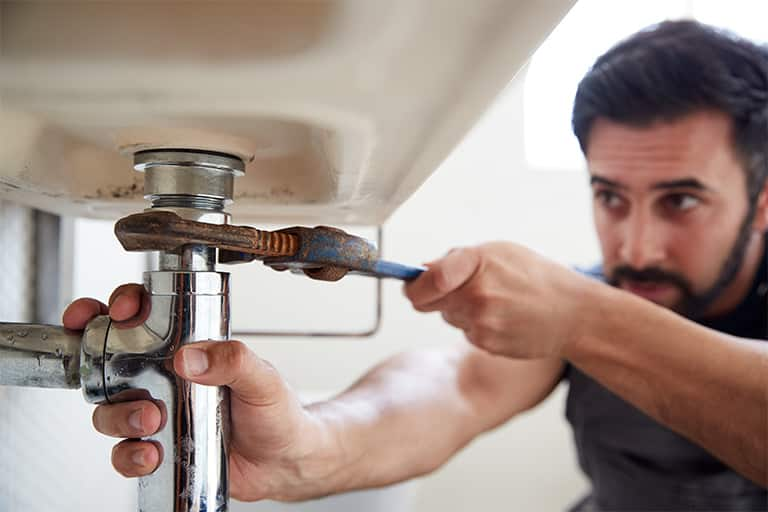Everybody seems to have their own unique theory in relation to Leaking water lines.
.jpg)
Early detection of dripping water lines can reduce a prospective calamity. Some small water leakages may not be visible.
1. Examine the Water Meter
Every house has a water meter. Inspecting it is a proven way that aids you uncover leakages. For starters, switch off all the water resources. Make certain no one will certainly flush, make use of the faucet, shower, run the washing device or dishwashing machine. From there, most likely to the meter and also watch if it will transform. Since no one is utilizing it, there need to be no activities. That suggests a fast-moving leak if it relocates. If you identify no modifications, wait a hr or two and check back once more. This implies you might have a sluggish leakage that might even be underground.
2. Inspect Water Consumption
Examine your water expenses as well as track your water intake. As the one paying it, you need to discover if there are any inconsistencies. If you find sudden changes, in spite of your usage being the same, it indicates that you have leakages in your plumbing system. Bear in mind, your water bill need to fall under the very same variety monthly. An abrupt spike in your costs suggests a fast-moving leakage.
Meanwhile, a stable increase monthly, despite having the same practices, shows you have a slow leakage that's additionally gradually rising. Call a plumber to completely examine your home, especially if you feel a warm area on your floor with piping below.
3. Do a Food Coloring Test
When it comes to water usage, 30% comes from toilets. If the color in some way infiltrates your bowl during that time without flushing, there's a leakage between the tank and dish.
4. Asses Exterior Lines
Don't forget to inspect your outdoor water lines as well. Examination spigots by affixing a yard pipe. Needs to water permeate out of the link, you have a loose rubber gasket. Change this as well as make certain all connections are tight. It will aid get it skillfully examined and preserved yearly if you've obtained a sprinkler system. One tiny leak can waste lots of water and surge your water expense.
5. Evaluate the circumstance and also check
Property owners ought to make it a routine to inspect under the sink counters as well as also inside closets for any type of bad odor or mold growth. These 2 red flags suggest a leakage so prompt attention is needed. Doing regular assessments, also bi-annually, can conserve you from a significant trouble.
If you know your home is currently old, keep a watchful eye on your heating units, pipes, pipes etc. Check for discolorations and deteriorating as many appliances and pipelines have a life span. They will certainly likewise naturally wear away as a result of deterioration. If you think dripping water lines in your plumbing system, do not await it to escalate. Call a professional plumber right away so you do not end up with a terrible mess in your home.
Early detection of dripping water lines can mitigate a prospective catastrophe. Some little water leakages may not be noticeable. Checking it is a proven means that assists you uncover leaks. One little leak can throw away heaps of water and also surge your water expense.
If you think leaking water lines in your plumbing system, don't wait for it to intensify.
WARNING SIGNS OF WATER LEAKAGE BEHIND THE WALL
PERSISTENT MUSTY ODORS
As water slowly drips from a leaky pipe inside the wall, flooring and sheetrock stay damp and develop an odor similar to wet cardboard. It generates a musty smell that can help you find hidden leaks.
MOLD IN UNUSUAL AREAS
Mold usually grows in wet areas like kitchens, baths and laundry rooms. If you spot the stuff on walls or baseboards in other rooms of the house, it’s a good indicator of undetected water leaks.
STAINS THAT GROW
When mold thrives around a leaky pipe, it sometimes takes hold on the inside surface of the affected wall. A growing stain on otherwise clean sheetrock is often your sign of a hidden plumbing problem.
PEELING OR BUBBLING WALLPAPER / PAINT
This clue is easy to miss in rooms that don’t get much use. When you see wallpaper separating along seams or paint bubbling or flaking off the wall, blame sheetrock that stays wet because of an undetected leak.
BUCKLED CEILINGS AND STAINED FLOORS
If ceilings or floors in bathrooms, kitchens or laundry areas develop structural problems, don’t rule out constant damp inside the walls. Wet sheetrock can affect adjacent framing, flooring and ceilings.
https://www.servicemasterbyzaba.com/blog/how-to-detect-water-leakage-in-walls/

We were shown that write-up about Locating water leaks from a good friend on another blog. Loved our posting? Please share it. Let other people check it out. I take joy in reading our article about Leaking water lines.